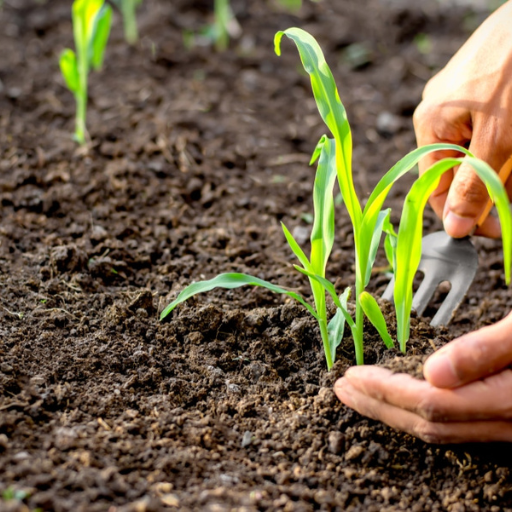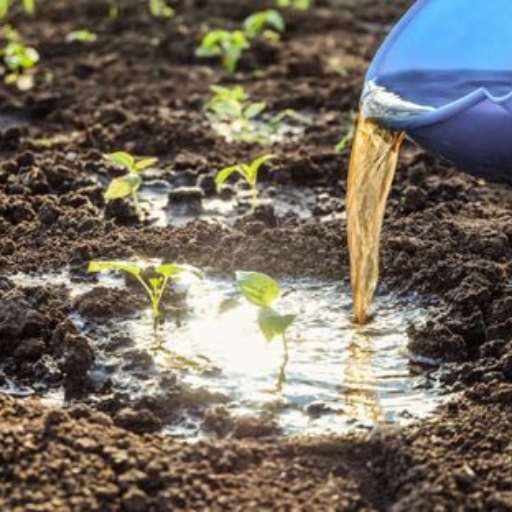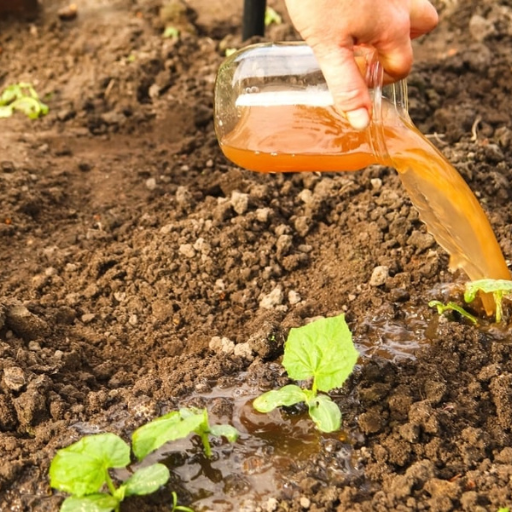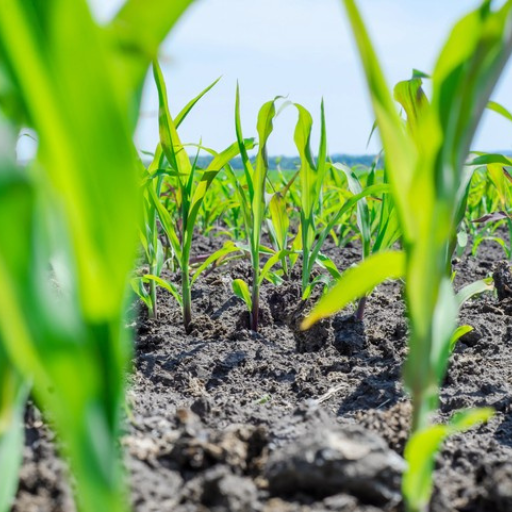Gardening enthusiasts and professionals alike understand the importance of giving their plants the best possible start. The health of your seedlings can determine the overall success and vitality of your garden. One key aspect of fostering robust growth during the early stages is the use of organic liquid fertilizers. In this blog, we will explore the benefits of using organic liquid fertilizers, explain how they work, and provide practical tips for their application. Whether you are a novice gardener or an experienced horticulturist, this guide will help you nurture your seedlings from day one, setting the stage for a thriving, healthy garden.
What is Organic Liquid Fertilizer for Seedlings?

Understanding Organic Fertilizers
Naturally, organic fertilizers are made from compost, animal manure or plant materials that decompose. While synthetic fertilizers are chemical products, organic ones rely on decayed organic material decomposition which ensures the soil is filled with all vital nutrients. Is this not slow nutrient release? Soil structure is improved and healthy microbial activities are encouraged as the nutrients get released slowly. Organic liquid fertilizers for seedlings offer a balanced supply of nutrients while supporting root development and overall plant growth without any chances of hazardous buildup or scorching.
Benefits of Liquid Fertilizer for Seedlings
Fast Nutrient Absorption: The availability of essential nutrients can be enhanced by liquid fertilizers since they can be absorbed instantly by roots and leaves of young plants. As a result; quick rejuvenation in health and vitality of plants.
- Promotes leafy growth (Nitrogen).
- Encourages root development (Phosphorus).
- Supports overall plant health and resistance to disease (Potassium).
Enhanced Root Development: It is easy for one to apply the liquid form directly to the roots which help in promoting strong root systems that should grow wide as this is important during early stages of plant development.
Improved Soil Health: Regular use of organic liquid fertilizers increases the amount of organic matter in the soil, creating an environment conducive for the activity microbes such as bacteria. This improves nutrient availability and promotes good soil structure.
Reduced Risk of Over-fertilization: In contrast, unlike synthetic types, organic liquid fertilizer releases its nutrients gradually thereby reducing risk over-fertilization through nutrient burn or leaching out into groundwater due to build up.
Sustainability: Prevents groundwater contamination minimizing environmental degradation caused by synthetic fertilizers
These benefits make organic liquid fertilizer an excellent choice for nurturing seedlings, ensuring robust growth and laying a strong foundation for a healthy garden that thrives well.
Various Types of Liquid Fertilizers
When considering different types of liquid fertilizers, it is critical to have an understanding of their specific benefits and suitable applications.
Fish Emulsion:
- Nutrient Profile: It usually has a 5-2-2 N-P-K ratio.
- Benefits: It supplies the nutrient demands within a short period and promotes soil microbial activity.
- Usage: Perfect for leafy vegetables and as foliar treatment spray.
Seaweed Extract:
- Nutrient Profile: It contains low levels of N-P-K but is high in elements like iron, zinc or magnesium which are trace elements.
- Benefits: Enhances crop growth, stress-resistance, root development; it also increases root growth by enhancing plants’ self-defense mechanism against diseases organisms (Fleming et al. 2006).
- Usage: Suitable for all types of crops; normally sprayed on leaves in most farms as foliar application.
Compost Tea:
- Nutrient Profile: Dependent on the type of compost used its N-P-K content may vary greatly.
- Benefits: Stimulates microbial activity in the soil resulting into greater uptake of nutrients by plants thus promoting good health for plants.
- Usage: Used both as a soil drench and for spraying plants through leaves with its aqueous solution.
Humic Acid:
- Nutrient Profile : While not being substantial source , It increases the nutrient uptake by plants.
- Benefits: It also improves soil structure, enhances water retention and promotes root proliferation.
- Usage: Applied as a soil drench to improve both fertility and growth of plants.
Liquid Manure:
- Nutrient Profile: Usually it possesses an N-P-K ratio of about 4-2-2.
- Benefits: Acts as an excellent source of plant food and organic matter.
- Usage: Mainly utilized for soil application during plant’s vegetative stage of growth.
These are some types of liquid fertilizers each having different benefits based on what they are meant for or where they are used in. It is important to understand these factors as it determines how healthy the plants will be kept and how fertile the soil remains.
How to Apply Liquid Organic Fertilizer to Seedlings?
Step-by-Step Guide to Apply Liquid Fertilizer
Dilute the Fertilizer:
As a general practice, it is necessary to mix liquid fertilizer with water following instructions from the manufacturer. The dilution ratio should be between 1:10 and 1:20 although this can vary according to the concentration levels of the product.
Water the Seedlings First:
Before applying liquid fertilizer, ensure that you have first watered your seedlings adequately. This reduces direct exposure of young plants to concentrated nutrients thereby preventing burn.
Apply During Cool Hours:
To avoid leaf burn and improve nutrient absorption, apply either early in morning or late afternoon when temperatures are cool. This means that at this time of day leaves will not be exposed to high heat causing scorching.
Use a Fine Spray:
For even distribution of diluted liquid fertilizer use a watering can with fine rose, spray bottle or misting system. Young seedlings require unobtrusive application where they are not disturbed and damaged.
Target the Base of the Plants:
You need to focus on fertilizing these seedlings at their base near the root zone. It ensures that soil and roots receive nutrients straight promoting efficient uptake.
Follow a Regular Feeding Schedule:
Repeating every one or two weeks depending on growth stage as well as plant type maintains continued growth and development for seedlings.
Monitor Plant Response:
Check if there is any sign of nutrient deficiency or over-fertilization like yellowing leaves or retarded growth among others. Thus, adjust frequency and concentrate of manure accordingly.
By following these steps properly, you can give your seeds all essential elements needed for their growth until maturity.
Synonyms replaced using foliar spray
Applying Foliar Sprays:
Liquid fertilizers sprayed directly onto leaves are foliar applications, which are able to provide a quick boost to plants. This way is especially effective for plants showing nutrient deficiency symptoms. To get the best possible outcome from it, these guidelines have to be followed:
Choose the Right Time:
Spray foliar sprays in early mornings or late evenings. In this way, one can avoid the evaporation of fertilizers under hot weather during afternoon hours and minimize possibilities of leaf burning.
Ensure Proper Dilution:
These liquid fertilizers must be watered down as per manufacturer’s advice; in most cases weaker than those applied on soil based methods. This will prevent leaf burn and allow for safe uptake of nutrients.
Use Fine Mist:
A fine mist that will coat the leaves uniformly without causing run-off can be produced by employing a spray bottle or mist system. Doing so enhances contact area between leaves and fertilizer hence promoting more absorption through foliage.
Target Younger Leaves:
More attention should be paid to younger leaves that are still growing rather than older ones since they absorb nutrients at a higher rate making correction of deficiencies quicker as well.
Monitor Weather Conditions:
The next 24 hours would see rain fall therefore avoid applying foliar sprays now because it washes away fertilizer before being absorbed by the crop plant.
Regular Applications:
Depending on how fast the plant needs it, make a repeat of every one or two weeks for foliar applications. Routine application will help keep nutrient levels optimal and maintain healthy growth rates too.
By following these steps, you can use foliar applications as an important tool in your plant care routine that addresses nutrient needs quickly and supports strong development.
Watering with Fertilizer for Best Results
When watering with fertilizer for best results, it is essential to follow a few key practices that ensure optimal nutrient availability and plant health. Firstly, choose the right type of water-soluble fertilizer based on your plant’s specific needs, which can be determined through a soil test. Mix the fertilizer at the recommended rate to avoid over-fertilization, which can harm plants. Apply the fertilizer solution directly to the soil around the base of the plants, ensuring even coverage but avoiding direct contact with the foliage to prevent potential burn. Water the plants thoroughly after fertilizing to help distribute the nutrients throughout the root zone and to reduce the risk of salt build-up in the soil. Finally, adhere to a consistent feeding schedule, typically once every two to four weeks, depending on the plant type and growing conditions. By following these guidelines, you can effectively enhance plant growth and promote a vibrant, healthy garden.
How to Choose the Best Liquid Fertilizer for Your Garden?

OMRI-Certified Fertilizers
Organic Materials Review Institute (OMRI) reviewed and approved OMRI-certified fertilizers for use in organic farming and gardening. They produced these fertilizers based on strict standards and do not contain synthetic chemicals which make them safe for organic products and good for the environment. All the components used are derived from natural sources through sustainable production processes as advocated through the certification process.
Benefits of OMRI-Certified Fertilizers:
- Eco-Friendly: Reduces environmental impact by avoiding dangerous chemicals.
- Safe for Plants and Soil: Improve soil health without causing damage to plants or beneficial soil microorganisms.
- Sustainable Practices: Utilizing them encourages sustainable agricultural practices.
Popular OMRI-Certified Fertilizers:
- Dr. Earth Organic Fertilizer: It is known for its rich blend of prebiotics, probiotics, and other beneficial microbes that support strong root growth and overall plant health.
- Espoma Organic Fertilizer: Contains natural proteins and beneficial microbes essential for robust plant development and enhanced nutrient uptake.
- Jobe’s Organic Fertilizer: Improved nutrients include improved soil structure and fertility over time securing long term garden health.
When choosing OMRI-certified fertilizers, look at the label for the OMRI certification logo, check out specific nutrient profiles that match your garden needs. High-quality organic fertilizers will play a significant role in ensuring that you maintain a flourishing sustainable garden.
Liquid Kelp vs. Fish Fertilizer
Liquid kelp versus fish fertilizer both have different benefits to your garden given distinct plant requirements as well as soil conditions they meet respectively when compared with each other.
Liquid Kelp:
- Nutrient-Rich: There are various micronutrients, minerals plus cytokinins being a kind of growth hormone which promote healthy growth in plants resulting into high yields from liquid kelp fertilizer applied.
- Stress Relief: Drought, temperature changes or transplanting can be managed as stressors in plants.
- Rapid Absorption: A foliar spray of the nutrient allows for quick uptake to address immediate plant requirement.
Fish Fertilizer:
- High in Nitrogen: Rich nitrogen content which is essential for healthy leafy growth and general plant vigor has made fish fertilizers popular among farmers.
- Organic Matter: It adds organic matter into the soil thereby improving its health, moisture retention and microbial activity.
- Sustainability: This fertilizer supports sustainable waste utilization practices because it is typically made from fish byproducts.
Both fertilizers serve a useful purpose in organic gardening. Use liquid kelp where there are micronutrient deficiencies or when you want to improve stress tolerance, while fish fertilizer stimulates rapid growth and promotes healthy soil. The choice of the appropriate one will depend on your garden goals andthe condition of your soil and plants currently.
Features of High-Quality Organic Fertilizers
High-quality organic fertilizers tend to have several characteristics differentiating them from substandard counterparts. First, they are made from natural ingredients such as compost, manure, bone meal, and plant extracts that slowly decompose to supply nutrients at steady rates. Second, these fertilizers enhance the microbial activity and structure of soils fostering improved aeration and water retention as important aspects of soil health promotion. Thirdly, these types do not contain synthetic chemicals or pesticides making them safe around pets areas people work or live.As well as fourthly; they often include a balanced blend of necessary nutrients including majors like nitrogen NPK & trace elements so that each type is tailored for different plants’ needs. Finally since they are often packed in eco-friendly materials thus encouraging sustainable gardening through using renewable resources.One should consider nutrient composition, sourcing and impact on soil health when choosing an organic fertilizer for their garden’s best performance
Can You Make Your Own Organic Liquid Fertilizer at Home?

Compilation of DIY Recipes for Homemade Organic Liquid Fertilizers
Indeed, you may create your own organic liquid fertilizer using a few ingredients available at home. Here are some approaches to making organic liquid fertilizers of your own:
Compost Tea:
- Ingredients: Fully decomposed compost (1 unit), water (10 units)
- Process: In a large container, mix the compost with water and let it soak for 24-48 hours as you occasionally stir it. Filter the solid particles from the mixture, put it in a covered container and store it as compost tea. It is rich in nutrients and beneficial microorganisms that promote soil health.
Banana Peel Fertilizer:
- Ingredients: Banana peels (2-3 pieces), water (1 liter)
- Process: Cut banana peels into small sizes and then soak them in water for 24-48 hours. Strain off the liquid after soaking and discard the peels. The resultant banana peel fertilizer contains lots of potassium which is appropriate for flowering plants.
Fish Emulsion Fertilizer:
- Ingredients: Fish scraps like heads and bones, water, sawdust or straw if available (optional)
- Procedure: Pour water onto fish scraps kept in a big container. To control smell, add saw dust or straw on top. Stir periodically then allow to settle and ferment over several weeks. When completely fermented, strain the liquid and dilute with five parts of water before applying to your plants. This nitrogen-rich fish emulsion helps boost growth of healthy plants and also improves soil quality.
By utilizing these recipes which contain readily available ingredients, nutrient-dense organic fertilizers can be created conveniently with minimal effort required by gardeners promoting sustainable garden practices.
Advantages of Creating a Home-Made Seedling Fertilizer
Using homemade fertilizer for seedlings yields numerous benefits that enhance healthy plant growth. Firstly, they usually have an adequate combination of vital nutrients necessary for young plants that stimulate robust root growth and stronger stems. Moreover, homemade fertilizers such as compost tea, banana peel fertilizer, and fish emulsion are predominantly composed of organic matter that improves soil consistency and increases the ability to retain moisture in it. This ensures that seedlings are well-watered and reduces transplant shock. Thirdly, these fertilizers which have natural ingredients encourage an abundant population of microorganisms in the ground which can mitigate disease incidence rate plus pests. Moreover, it is more economical and ecologically friendly to make your own fertilizers than buying synthetic alternatives since it reduces chemical runoff and promotes sustainability in garden care.
How to Transplant Seedlings Using Organic Liquid Fertilizer?

Hardening Off Seedlings for Transplant
In preparing the seedlings for transplant, I first of all ensure that they have been adequately hardened off. This is done by gradually exposing them to outdoor conditions over a period of about 7-10 days, starting with a few hours of sunlight and increasing the duration each day. During this time, watering is reduced so that the roots can become strong and hardy. Before transplanting, it is best to choose an overcast day or transplant in the late afternoon so as not to strain them out much. The seedlings are thoroughly watered before they are planted into well-manured soil at the new site. With care, I take hold of the leaves rather than the stems in order to avoid any damage then plant them at their original pot depth positions. As soon as I have placed my new location’s seedlings there perfectly well with adequate amounts of water needed for their survival and/or growth promotion then added diluted organic liquid fertilizer.
Measures to Reduce Transplant Shock
To decrease transplant shock amongst my seedlings, I follow several steps. For instance, during transplantation time ensuring that my plants are watered enough so as not to dry up is essential.The reason behind this may be attributed to properly handling of these young plants such that holding by their leaves prevents breakage or root damages after removal from pots.Finally, I put heaps pf organic matter on each hole and deep water everything on a new planting site.I also use weak solutions of organic fertilizers immediately after transplanting in order to facilitate faster growth among these baby plants.I sometimes prefer doing it on cloudy days especially towards evening when there is no danger of too much sunshine.Finally under such conditions; regularly moistened soil can be maintained hence proper monitoring should be enhanced in order detect some signs of stress among my babies while giving extra care where necessary.
Taking Care Of The Seedlings After Transplant
As soon as my seedlings have been transplanted, I make sure that they receive adequate water for the first few weeks hence make it a point of watering them frequently to sustain this. Regular watering is needed in order to keep the soil uniformly moist, although it should not be excessive since over-watered soil can lead to root-rot.Mulching around the seedlings helps keep moisture levels in the soil constant as well as regulate its temperature. While monitoring is very important so that any stress or pest on the plants can be detected and dealt with using natural remedies.I feed my plant with balanced diluted organic fertilizers every two weeks as such practices support good health while always guarding against sun burnings during extreme heat by providing some shade.
Frequently Asked Questions (FAQs)

Q: What is organic liquid fertilizer for seedlings and why should I use it?
A: This kind of plant food helps in metabolism at the early stage of plants. With this, you are guaranteed that your seedlings will grow into strong healthy plants; this is especially important for those with vegetable gardens or herbs grown in pots.
Q: How do I determine the right amount of organic liquid fertilizer for my seedlings?
A: Typically, you would have to dilute the organic liquid fertilizer with water as per the prescription written on the product label. For instance, 1 quart of fertilizer may need to be mixed with a gallon of water. A correct concentration will avoid over-fertilizing, which can hurt your seedlings.
Q: Can I use organic liquid fertilizer for indoor plants?
A: Of course, this type of organic liquid fertilizer can also serve as an indoor plant fertilizer. It gives them what they require to grow well, whether it’s a house plant or any other form of indoor foliage.
Q: What are the benefits of using a 3-2-2 organic liquid fertilizer?
A: The proportionate ratios (i.e., 3-2-2) in a 3-2-2 organic liquid fertilizer consisting of nitrogen, phosphorous and potassium promote root development, stem growth and general fitness in plants. It is advantageous both in case of eco-gardening method and traditional methods.
Q: How often should I apply organic liquid fertilizer to my seedlings?
A: During growing season people normally get used to applying it every one or two weeks while planting their flowers. And when your tiny ones have their first true leaves showing up this is crucial phase too because there must be constant nutrients coming in.
Q: What makes liquid fish fertilizer effective for seedlings?
A: They contain trace minerals that aid soil health along with water absorption by young plants as well as amino acids that promote soil health and water absorption by young plants along with trace minerals.






